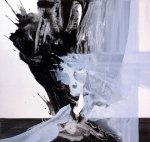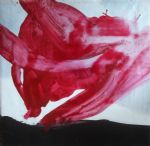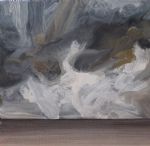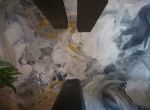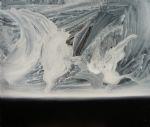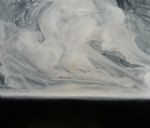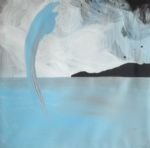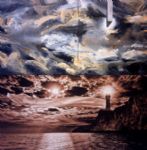CAPRICORNO GALLERY | ARTIST
Salvatore Garau Giovanni Frangi Luca Pignatelli Ercole Pignatelli Marisa Lambertini Velasco Ugo Riva Marco Petrus Soonja Han Flaminia Mantegazza Carlo Ramous Tommaso Cascella Heinrich Nicolaus Geraldina Garattoni Giovanni Calabrese Anna Maria Curto Federico Guida Daniele Peruzzi-fotografo Vittore Frattini Monica Marioni Maura Bruno Fiammetta Giuliani Michela Crisostomi DormiceSalvatore Garau
SALVATORE GARAU (Santa Giusta 1953) lives and works between Oristano and Milan. He has participated in numerous and prestigious international exhibitions. Such as his 2000 and 2001 exhibitions at the Capricorno Gallery of Capri and at the Corraini Gallery of Mantova, in whose catalogue there is a wide selection of poems written by the artist. In 2002 he had the grand exhibit at the Stelline Foundation of Milan, accompanied by an important catalogue with writings by Antonina Zaru, and Tommaso Trini. In 2003 he participated at the Venice Biennale and at the European Parliament in Strasbourg. In 2004 he opened his one man show at the Limn Gallery of San Francisco, CA and at the Capricorno Gallery in Washington DC, in which the catalogue was introduced by the text of Lorand Hegyi. Works by the artist are on display at the Museum of Contemporary Art in San Francisco, CA. In 2005 Garau exhibited in Naples at Palazzo Crispi and in Milan on Corso Magenta with a gigantic canvas of 200 square meters, and in Spoleto at the Museum of Contemporary Art. In 2006, he showed in Sardinia, with Ichthys Sacred Pond, where he flooded three deconsecrated churches bringing in water and fish from surrounding ponds. Most recently Garau exhibited his works at the exhibition “Frames with a time horizon” at the Musée d’Art Moderne de Saint-Etienne Métropole in France, in 2009 and at the Miró Quesada Garland Gallery of the Municipality of Miraflores in Lima, Peru in 2010. In 2011 he was invited and participated in the Italian Pavilion at the Venice Biennale. When we look at Salvatore Garau’s paintings, we have a sensation similar to that which would occur on the banks of a broad and mighty river, whose surface is caressed by a gentle breeze and whose small waves and ripples sparkle in a silver light. The sensation is that of a certain dignity, power, gravity and at the same time also of liberation, of euphoria, vigor, something that is tied to a sense of unboundedness. It is like a huge open stage, a limitless horizon, a scene in which we expect something huge and impressive to happen. This cosmic character of Salvatore Garau’s figurative world, this emotionalized universalism, connects his aesthetics with the tradition of romanticism. The contrast between very small and giant awakens tragic and heroic feelings: the feeling of abandonment, helplessness, loss and simultaneously resistance, struggle, and liberation. This monumentalism creates a theatrical aspect that makes the image a stage. The effects of light, the movements, and the wide horizons that leads to infinity, the dramaturgy of fixed, stable and in motion elements, suspended, floating, together create a great universal theater.
Exhibitions and News on Salvatore Garau
- Up to 2013-06-09: SALVATORE GARAU
- Up to 2013-06-20: Artisti Contemporanei

